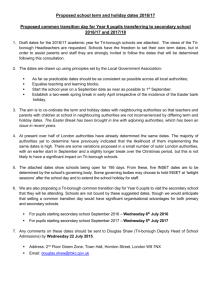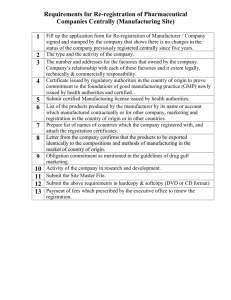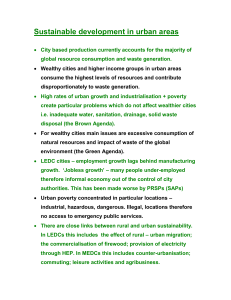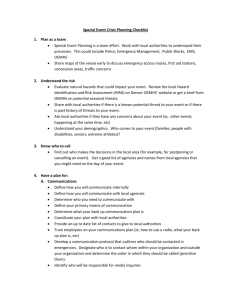2.5.2 Health care
advertisement
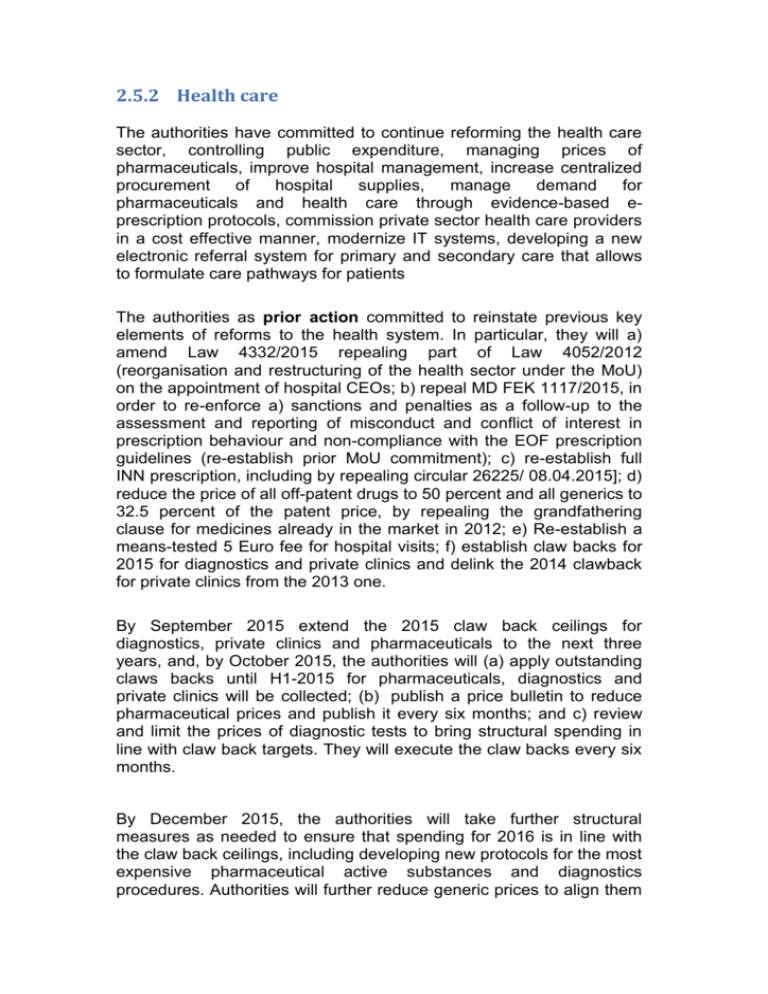
2.5.2 Health care The authorities have committed to continue reforming the health care sector, controlling public expenditure, managing prices of pharmaceuticals, improve hospital management, increase centralized procurement of hospital supplies, manage demand for pharmaceuticals and health care through evidence-based eprescription protocols, commission private sector health care providers in a cost effective manner, modernize IT systems, developing a new electronic referral system for primary and secondary care that allows to formulate care pathways for patients The authorities as prior action committed to reinstate previous key elements of reforms to the health system. In particular, they will a) amend Law 4332/2015 repealing part of Law 4052/2012 (reorganisation and restructuring of the health sector under the MoU) on the appointment of hospital CEOs; b) repeal MD FEK 1117/2015, in order to re-enforce a) sanctions and penalties as a follow-up to the assessment and reporting of misconduct and conflict of interest in prescription behaviour and non-compliance with the EOF prescription guidelines (re-establish prior MoU commitment); c) re-establish full INN prescription, including by repealing circular 26225/ 08.04.2015]; d) reduce the price of all off-patent drugs to 50 percent and all generics to 32.5 percent of the patent price, by repealing the grandfathering clause for medicines already in the market in 2012; e) Re-establish a means-tested 5 Euro fee for hospital visits; f) establish claw backs for 2015 for diagnostics and private clinics and delink the 2014 clawback for private clinics from the 2013 one. By September 2015 extend the 2015 claw back ceilings for diagnostics, private clinics and pharmaceuticals to the next three years, and, by October 2015, the authorities will (a) apply outstanding claws backs until H1-2015 for pharmaceuticals, diagnostics and private clinics will be collected; (b) publish a price bulletin to reduce pharmaceutical prices and publish it every six months; and c) review and limit the prices of diagnostic tests to bring structural spending in line with claw back targets. They will execute the claw backs every six months. By December 2015, the authorities will take further structural measures as needed to ensure that spending for 2016 is in line with the claw back ceilings, including developing new protocols for the most expensive pharmaceutical active substances and diagnostics procedures. Authorities will further reduce generic prices to align them with the three lowest in Europe, including by making greater use of price-volume agreements where necessary. Over the next three years, they will develop additional prescription guidelines giving priority to those with the greatest cost and therapeutic implications. Ambitious but feasible timelines will need to be set by the Authorities. By December 2015 (and by December 2016, respectively), the authorities will take concrete steps to increase the proportion of centralized procurement to 60 percent (and to 80 percent), the share of outpatient generic medicines by volume to 40 (and to 60 percent), inpatient generic medicines to 50 (and to 60 percent) and the share of procurement by hospitals of pharmaceutical products by active substance to 2/3 (and to ¾) of the total, in line with agreed targets. Generic penetration should be supported by further actions to improve the incentive structure of pharmacists, including on profit structure, by August 2016. The authorities will introduce new drugs into the positive list on the basis of criteria sets in Law. xxx/ 2012, subject to prescription guidelines, and with prices set at the level of the lowest three in the EU or lower if the authorities can negotiate a rebate. By December 2017 the Authorities will set-up an HTA centre that will inform the inclusion of medicines in the positive list. To improve financial management of hospitals, the authorities will by December 2015 deliver a plan to adopt DRG or other international standard activity-based costing methodology to hospitals within the next three years; by December 2017 they will implement the new DRG or alternative activity-based costing system; by June 2016 they will deliver a plan to conduct annual independent financial audits of hospital accounts, with implementation to begin in 2017, and for all hospitals to be covered by 2018. To this end, they will make use of the available Technical Assistance support. To assess the performance of health care providers, both public and private, EOPYY will continue to collect and publish relevant data [on a monthly/quarterly] basis. By June 2016, the authorities will develop an assessment of public sector capacity by region and by specialty and will use this to review the need for commissioning private providers per region; and they will develop a new electronic record for patients. By August 2016 they will develop a new system of electronic referrals to secondary care based on e-prescription and the electronic record and allowing the monitoring of waiting times. By June 2017, the authorities will develop a plan to pre-approve referrals to private sector providers based on the electronic patient record, the system of electronic referrals and the mapping of public sector capacity. Over the next three years, the authorities will develop therapeutic protocols for the patient care pathways (primary and secondary care) for the pathways that have the greatest therapeutic and cost implications, to be implemented through the e-prescription system. The authorities will closely monitor and fully implement universal coverage of health care and inform citizens of their rights in that regard and they will proceed with the roll out of the new Primary Health Care system and the issuing of an MD as envisaged in Law 4238 by December 2015. To this end, they will make use of the available Technical Assistance support.


